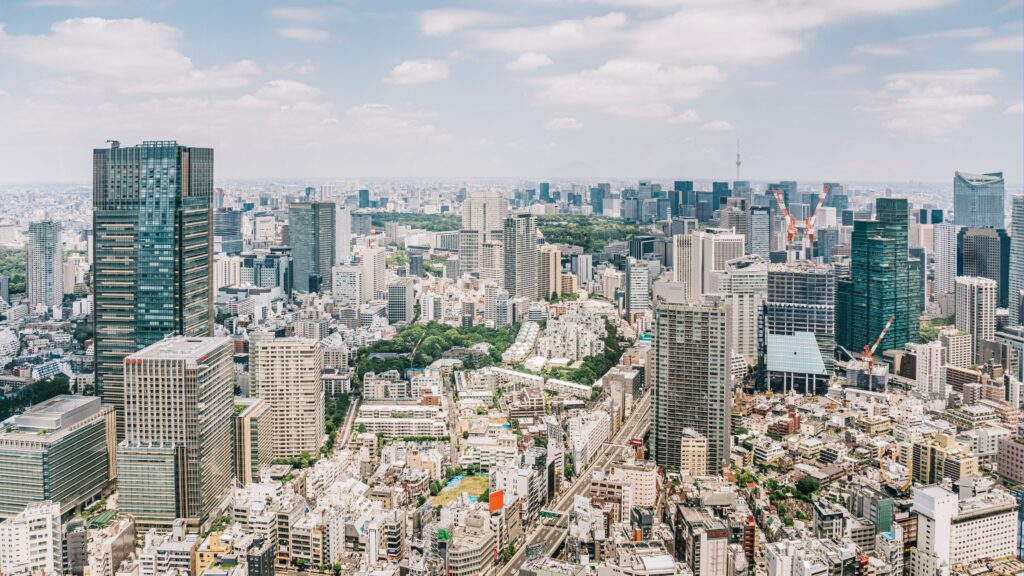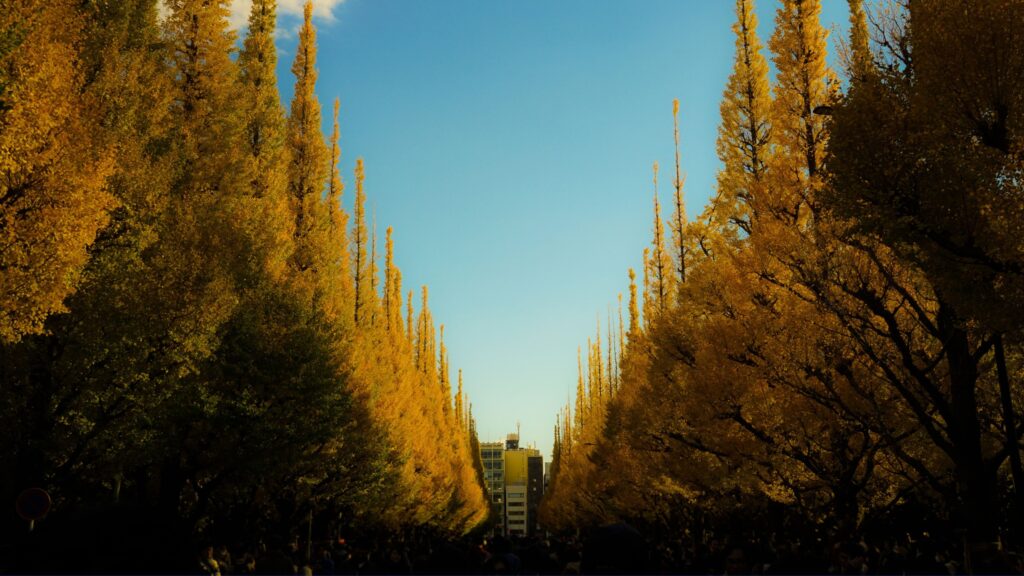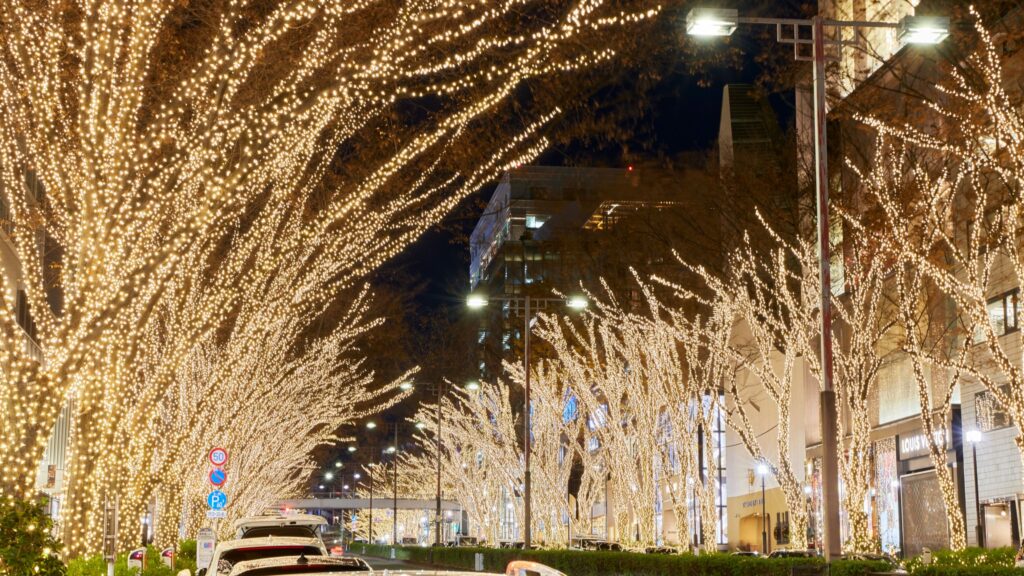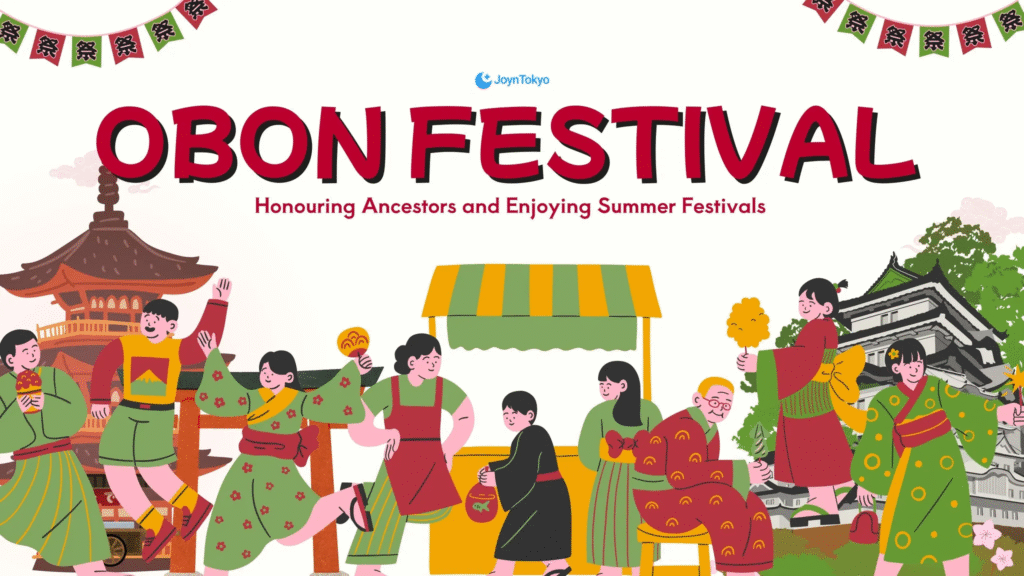Understanding the seasons in Tokyo is essential for adjusting to local life, planning activities, and experiencing the city’s cultural rhythm. Each season in Japan influences how people dress, what they eat, and how they enjoy daily life. This guide provides detailed and practical insight into each Tokyo’s seasonal cycle.
A Snapshot of Tokyo’s Seasonal Rhythm
Tokyo moves through four well-defined seasons, each bringing noticeable changes in weather and atmosphere. These influence everything from school schedules to national holidays, making seasonality a core part of Japanese life.
Spring in Tokyo, Japan: Sakura Season and Mild Weather

Spring is one of Tokyo’s most iconic and visually stunning seasons. The city becomes vibrant and lively as temperatures warm and people gather outdoors.
Cherry Blossoms and Hanami Culture
Cherry blossoms usually bloom from late March to early April, covering Tokyo in soft pink hues that attract millions of visitors. Popular parks such as Ueno, Yoyogi, and Shinjuku Gyoen transform into picnic spots filled with families, friends, and coworkers. Hanami, the tradition of gathering under sakura trees, is a relaxed way to socialize and participate in a beloved cultural tradition.
Read More
Spring Weather in Tokyo
Spring weather begins in March but gradually warms through April and May. Light layers, sweaters, and jackets work well during this transitional period. Occasional rain and gusty winds appear, yet overall the season remains pleasant and ideal for outdoor exploration.
Traditional Events and Seasonal Foods
Golden Week in late April and early May fills the city with domestic travel and holiday excitement. Seasonal foods such as bamboo shoots, strawberries, and sakura-flavored sweets become widely available in supermarkets and cafés. For expats, trying these foods is a great way to connect with Japanese spring traditions.
Summer in Tokyo: Heat, Humidity, and Festival Spirit

Summer in Tokyo is bold, lively, and energetic. It is also one of the most challenging seasons due to intense heat and humidity. Despite the climate, the season is filled with cultural traditions that make it memorable.
Seasonal Weather in Tokyo During Summer
June begins with the rainy season, known as tsuyu, bringing humid and frequent showers. By July and August, temperatures often exceed 30°C with extremely high humidity, making sun protection and hydration essential. Many people rely on cooling towels, portable fans, and air-conditioned cafés to stay comfortable.
Fireworks, Festivals, and Yukata
Tokyo’s summer would not be complete without festivals, known as matsuri, that fill neighborhoods with music, dancing, and food stalls. Fireworks displays, such as the famous Sumida River Fireworks Festival, draw impressive crowds every year. Many people like to wear a yukata, an easy to wear summer kimono, simply because it makes the whole season feel a little more fun and immersive.
Obon Traditions and Seasonal Foods
Obon in mid-August is a time when families honor ancestors through rituals and homecomings. Many Tokyo residents leave the city, creating quieter streets and a calmer atmosphere. Seasonal summer foods such as shaved ice, cold soba noodles, and grilled eel help residents stay cool and enjoy the spirit of the season.
Read More
Autumn in Tokyo, Japan: Comfortable Climate and Changing Leaves

Autumn is widely considered one of the most comfortable seasons in Tokyo, as the humidity fades, temperatures cool, and vibrant foliage transforms the city. This seasoon becomes a favorite time to explore parks, neighborhoods, and hiking trails.
Autumn Foliage Across the City
From late October to early December, Tokyo’s parks and streets shift into shades of red, yellow, and orange. Spots like Rikugien Garden, Meiji Jingu Gaien, and Mount Takao attract visitors seeking scenic views and peaceful walks. Clear skies and mild temperatures make this season perfect for weekend trips and cultural outings.
Read More
Autumn Weather and Seasonal Lifestyle
Temperatures during autumn remain moderate, requiring only light sweaters or long sleeves. While early September may bring occasional typhoons, the rest of the season is generally calm and pleasant.
Festivals, Food, and Cultural Events
Autumn is deeply tied to themes of harvest and gratitude in Japanese culture. Events like Shichi-go-san in November highlight traditional customs as families celebrate their children at local shrines. Seasonal foods such as sweet potatoes, mushrooms, chestnuts, and grilled fish appear everywhere, offering warm and comforting flavors.
Read More
Winter in Tokyo, Japan: Clear Skies, Illuminations, and New Year Traditions

Winter in Tokyo is cool, quiet, and festive. Although milder than northern Japanese cities, Tokyo still experiences crisp air and occasional snow. The season brings illuminating displays and deeply meaningful cultural traditions.
Read More
Winter Weather in Tokyo
Temperatures frequently drop near freezing at night, though daytime conditions remain manageable for most residents. Snowfall is uncommon but does occur once or twice each year. Locals typically wear coats, scarves, and heat-tech layers to stay warm while commuting or exploring the city.
Seasonal Illuminations and Festive Atmosphere
Tokyo’s winter illuminations create some of the most magical scenes of the year. Areas like Marunouchi, Roppongi, and Shinjuku shine with elaborate light displays from December through January. Walking through illuminated streets becomes a simple but delightful winter activity.
New Year Celebrations and Cultural Customs
New Year, or Oshogatsu, is the most important holiday in Japan. Families visit shrines for hatsumode, the first shrine visit of the year, to pray for health and good fortune. Traditional foods such as osechi ryori, mochi, and various hotpot dishes appear in homes and restaurants, creating a warm and festive atmosphere.
Read More
Understanding Tokyo’s Seasonal Flow
Tokyo’s four seasons shape daily life, cultural events, and food traditions in unique ways. Spring brings blossoms and renewal, summer offers dynamic festivals and intense heat, autumn provides comfort and colorful foliage, and winter delivers clarity and meaningful celebrations. By tuning in to these seasonal rhythms, you may find yourself connecting more naturally with the culture and enjoying a richer experience of life in Tokyo.












